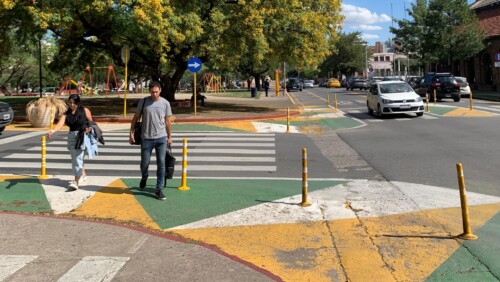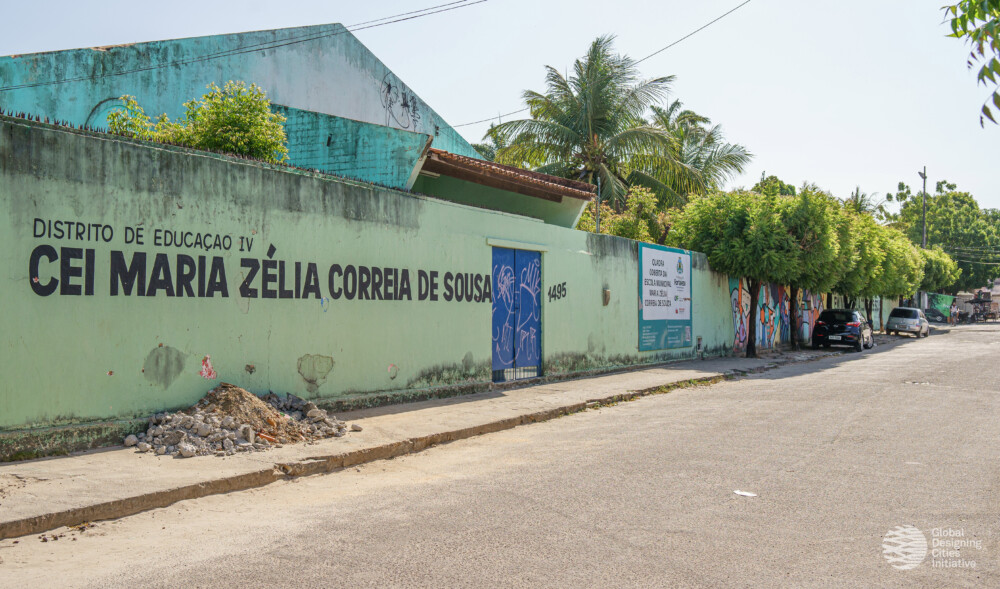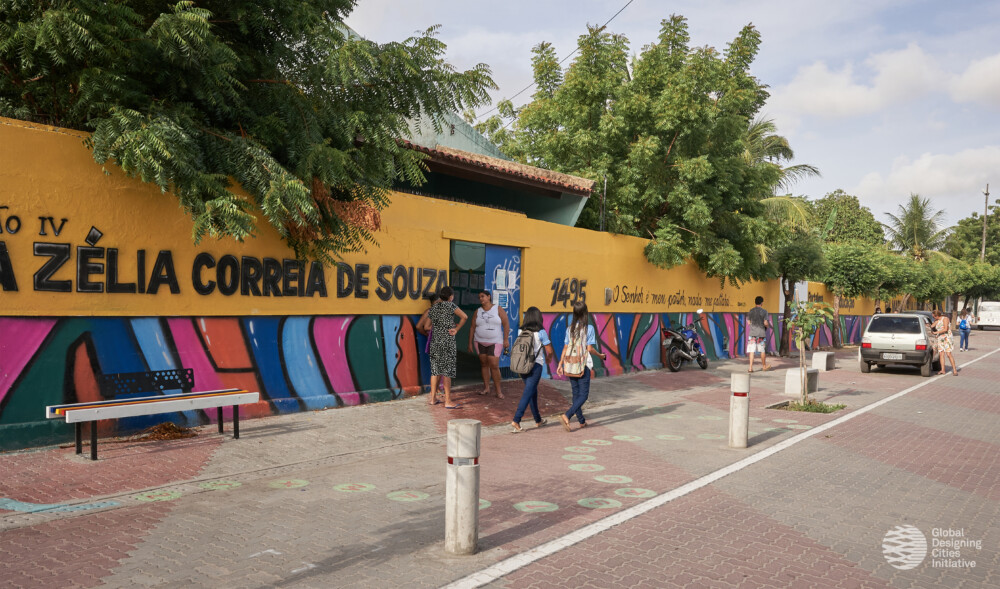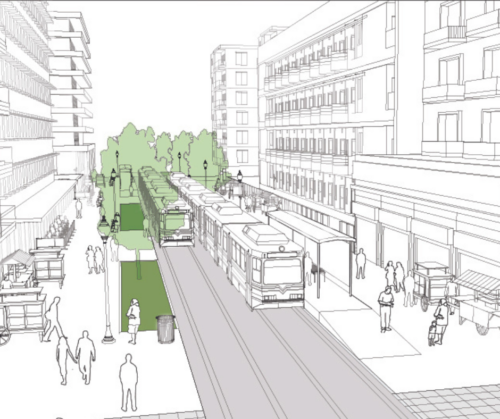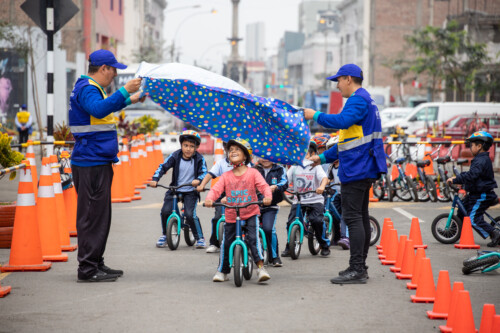Rua Antônio Pereira is a street in the Planalto Ayrton Senna neighborhood of Fortaleza, Brazil, where children and caregivers spend significant time because of the elementary school in the area. However, until recently, this street faced a number of safety concerns. Cars and motorcycles were known to speed down the street, and the sidewalks were narrow and uneven—compelling pedestrians to walk in the street among vehicles rather than the sidewalk.
In 2019, Fortaleza established the Caminhos da Escola (Pathways to School) program with the goal of reducing the number of children killed and injured in road crashes. With the support of Global Designing Cities Initiative’s (GDCI) Streets for Kids team, local teams examined several sites that had been previously identified by Caminhos da Escola. Based on different factors like road crashes in the area, the amount of students, and the availability of public spaces in the schools’ surroundings, they selected a site comprising two adjacent streets: Rua Antônio Pereira and Avenida Chico Mendes. For this specific area, another important factor was that the city already had designated funds due to a bigger structural program in the city. Throughout the implementation of this Streets for Kids project, several departments in the city of Fortaleza were involved—including the Municipal Office of Regional Management, Fortaleza Traffic Authority, the Secretary of Education, and the Science, Technology, and Innovation Foundation of Fortaleza. Aside from the work on-site, this project involved school community members as key stakeholders.
To address the issues mentioned above, the Streets for Kids project focused on reducing the space dedicated exclusively to motorized vehicles and transforming it into a shared public space by changing the street pavement, closing a street segment to build a play area, and adding furniture such as planters, benches, and paint designs.
This brought forth 1,900 square meters of reclaimed pedestrian space, 120 square meters of new play space, and 22 new places to sit.
Following the completion of the Streets for Kids project, more than 90% of children surveyed found the new conditions of the street safer for walking as well as for playing. Additionally, the survey found that more than 80% of caregivers were more likely to bring their children to the redesigned street.
The overall response to this project was extremely positive, with students and community members expressing that they feel safer and more comfortable using the street in question.
